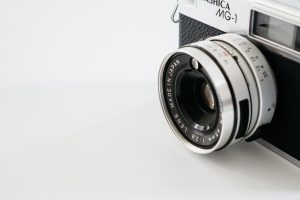High-Quality Photography, High-Quality PR
Published on February 24, 2021, at 9:30 p.m.
by Emma Britt.
If someone knew nothing about your business other than what they saw from a single photo, how would they describe it?

When one thinks of public relations, photography is probably not the first thing on their mind. However, it can be one of the most important aspects in today’s communication-driven environment. Photography helps capture the message or story of a business or organization and portrays that message in a strategic way. Without a high quality and well-thought-out image, the message may not be as clear or vivid toward the audience.
Photography assists with aspects of public relations, such as properly delivering the producer’s message, adding substantial value to the business’s overall representation, and connecting communities and strengthening relationships. Whether photography is used within a business’s website, on social media or in media coverage, if the images are poor quality, then consumers will predict that the business’s products or services are poor quality as well. Images reflect the business or organization more than anything else because they portray real life and ignite human emotion. In a world where social media is all-consuming, it is vital that the photos or videos presented by a business or organization carefully mirror the message or goal of that business or organization.
According to Social Media Strategist Jeff Bullas, Facebook posts that contain images receive 37% more engagement than posts without images, and tweets that contain images receive an average 35% boost in retweets. Also according to Bullas, the Google search for social media images has reached an all-time high and is not foreseen to slow down anytime soon.
Unfortunately, consumers Googling “social media images” is not enough to set a business apart on social media; iPhone pictures are not enough to cut it these days. In the world of social media, quality reflects effort for businesses. If consumers see blurry or sloppy images associated with a business’s or person’s page, they are going to assume the product of that business meets the same standard. Quality indicates effort when it comes to photography; the higher the pixels, the higher the engagement.
An example of a business that utilizes high-quality photography is Califia Farms. Lilach Bullock, of Forbes, reported that Califia Farms uses Instagram to drive traffic to its website, which ultimately boosts sales. This dairy-free business has found a way to make almond milk look like heaven. Its Instagram posts consist of beautifully designed plates and recipes specific to its products. These types of posts give followers a strong incentive to click the link in its bio — they simply cannot resist that dairy free yogurt parfait recipe.

Molly Wantland is a professional photographer in the heart of small-town Tennessee. She started her own photography business, Simply M Photography, and currently uses Instagram and her website as her main platforms. When asked about the importance of high-quality images, Wantland stated, “Whether a business is taking photos themselves or hiring someone to, photos need to be well-composed, well-lit and consistent in editing. This may take a while to nail down, and that’s OK. But that should be the goal if you’re trying to find people who are attracted to and want to support your brand.”
Instagram was a game changer for Wantland — it provided her the opportunity to do giveaways with local businesses, write guest blogs and photograph for businesses that would not have found her otherwise. Social media has boosted Wantland’s business and given her relationships with other photographers who have pushed her out of her comfort zone and made her a better photographer, she said. In this way, photography has enhanced public relations for her. This push is a great example of how photography and PR can bounce off of each other, providing endless opportunities to form relationships or connect with other professionals and businesses.
Another middle Tennessee photographer, Sarah Gilliam, used her photography talent to connect the small town of Columbia, Tennessee. What started as photographing residents of her hometown turned into a 300-image collection and an outdoor exhibit — and then Portrait Parkwas born. These portraits were displayed on Aug. 1, 2020, in the Columbia Arts District and will continue to be shown in other city and county parks. “It is meant to create engagement and movement and spark conversations and new relationships within our community. It is meant to bring us together,” she explained.
Gilliam’s campaign is a clear example of how photography brings people together and unites a community. She had a larger goal to connect the people of Columbia and celebrate the diversity of the city — something she did through very personal and well-articulated photography. She brought faces to places and made everyone feel as if they were a part of something larger than themselves. Through photography, Gilliam strengthened relationships throughout the Columbia community and ultimately used this asset for the greater good.

These two local photographers are perfect examples of the different ways photography can bridge the audience to the message. High-quality images and personable campaigns are just two ways photography can enhance a business and allow its message to come across accurately.
Ultimately, people connect with other people more than they would a colorful graphic or a still-life photo. Using photography on websites, social media accounts or in media coverage can only enhance public relations. A photo can make all the difference in a text-based story, a wordy webpage or a graphic-heavy feed. When they said “a picture is worth a thousand words,” they really meant it. Photography is a tool in the toolbox of public relations — it would be a shame not to utilize it.




